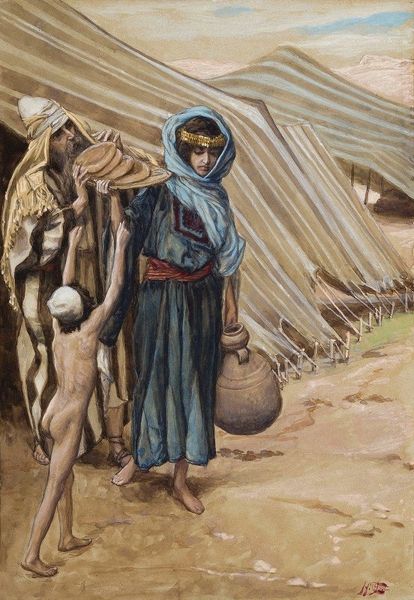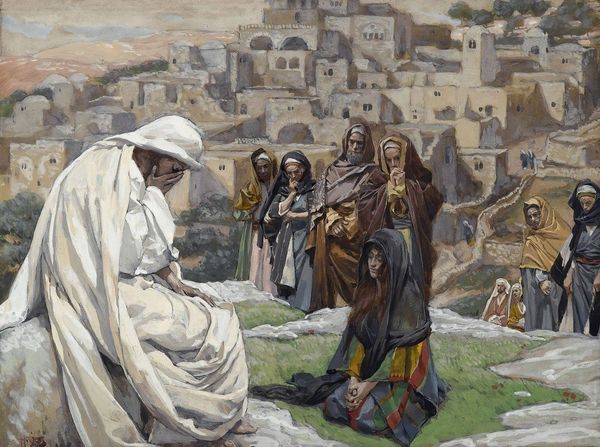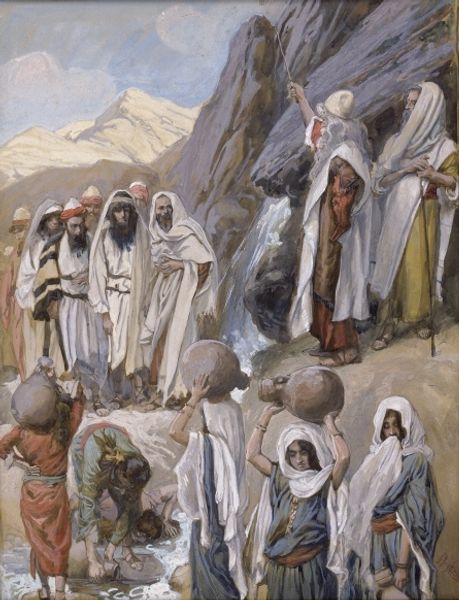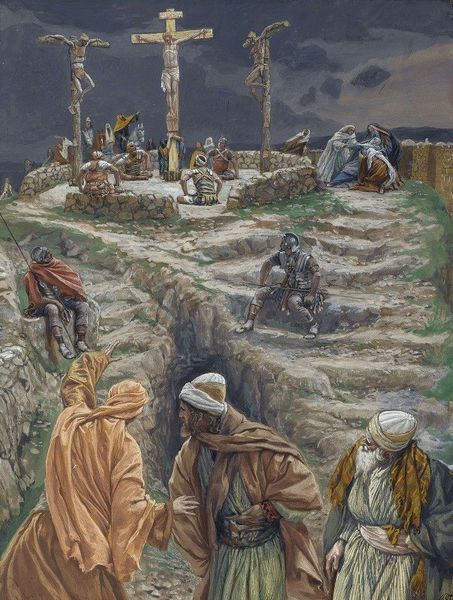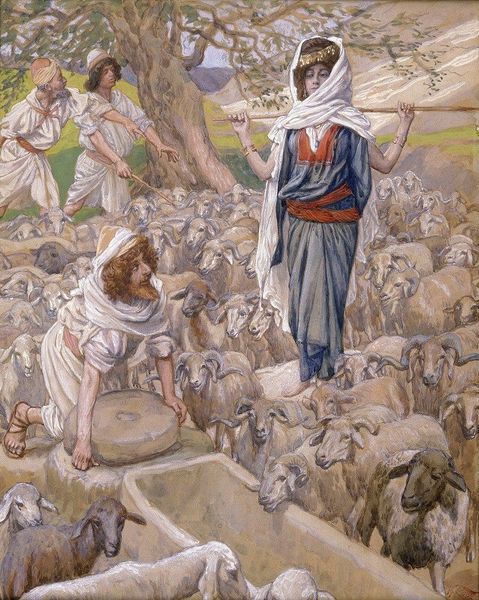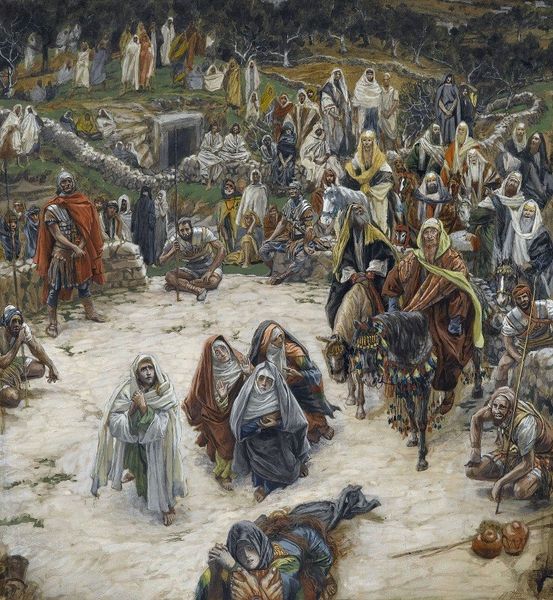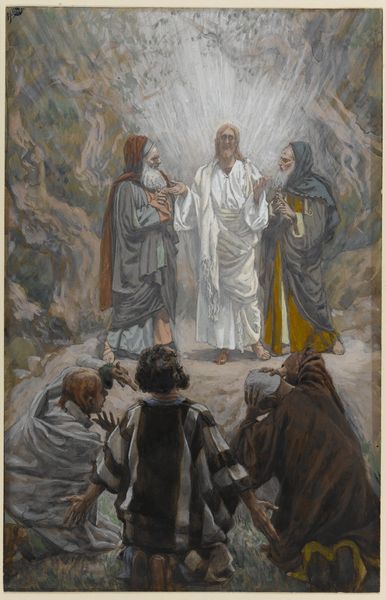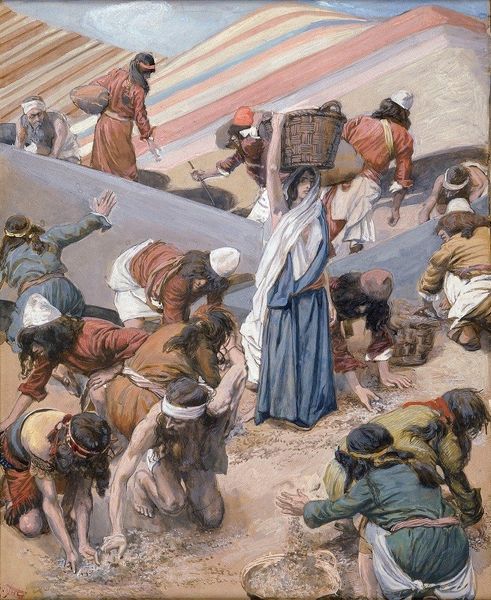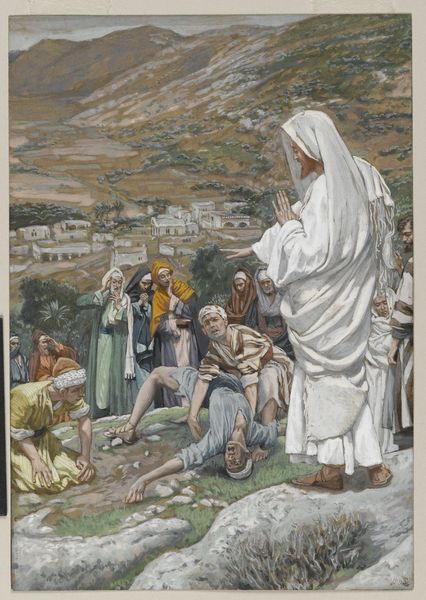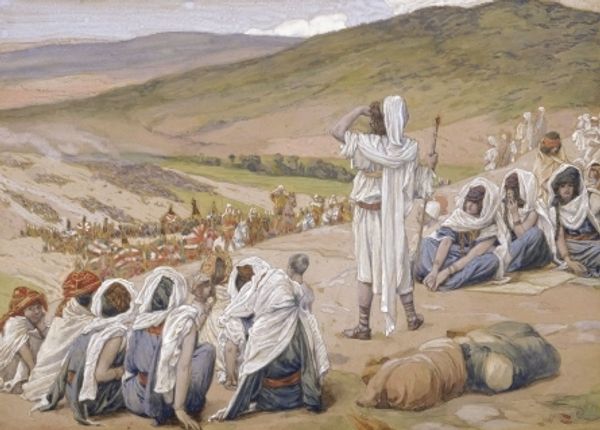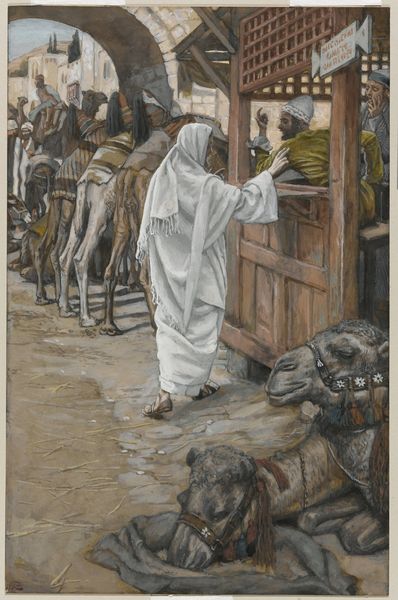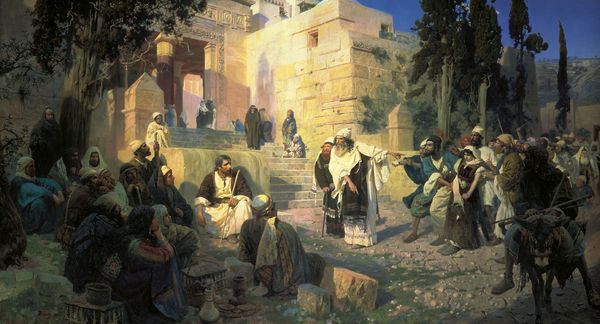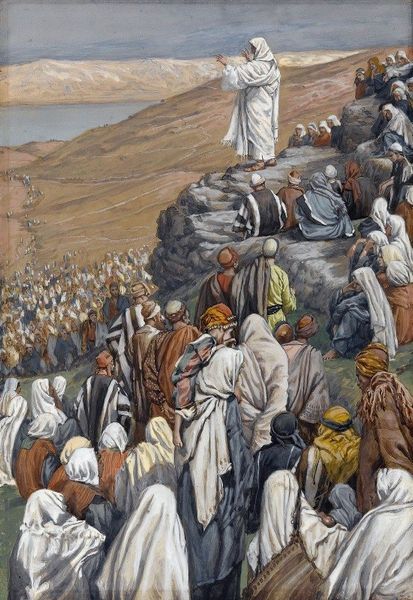
Copyright: Public domain
Curator: Isn't it incredible how a single moment, seemingly frozen in time, can ripple outward to shape a destiny? That's the sensation I get looking at James Tissot's 1902 painting, "Abraham's Servant Meeteth Rebecca." Editor: Immediately striking is the raw labor it depicts: the strain of Rebecca, bearing a vessel filled with water, mirrored by other women carrying their heavy vessels up a steep embankment in an almost factory-like queue. This speaks volumes about gendered labor. Curator: Absolutely. And look closer—the water jugs these women bear aren't standardized objects but individual craftworks. It makes me wonder what each of them held inside before they came to this well. Tears? Dreams? Just plain thirst? Tissot’s landscapes always spark these odd reflections for me... Editor: That acute attention to materiality begs the question: where did Tissot acquire such extensive knowledge of the costumes, vessels, and tools presented within these works? There's so much more than just artistic intention at play—think of the material sourcing, transport, and social relations of the paint pigment alone! Curator: Yes, it's also about trade routes! These weren't simply commodities; they're the echoes of untold stories. I almost feel like each of them chose what's on their head. It wasn't simply an utilitarian requirement... Rebecca seems to understand her role. Editor: I read something recently about how Tissot, particularly in his later biblical paintings, shifted from observing the fashionable contemporary world to reimagining ancient settings. That transition highlights the change of labour, or rather displacement of its process, away from artistic production toward industrial mass production. Curator: Right. He sought refuge in a time before modern alienation, before industrial sameness. Yet here we are, two centuries later, drawn to these imagined versions of ancient settings for some semblance of humanistic wonder! Editor: Indeed. This scene reminds us that even within biblical narratives, there were daily burdens of materiality. That perhaps by showing it, Tissot, unintentionally, also revealed the roots of modern divisions. Curator: Thanks to his keen eyes and oil pigments, Tissot left breadcrumbs toward some interesting truths, or at least, avenues to ask better questions. Editor: A confluence of pigment and possibility, then. A truly material understanding gives an interesting foundation.
Comments
No comments
Be the first to comment and join the conversation on the ultimate creative platform.
